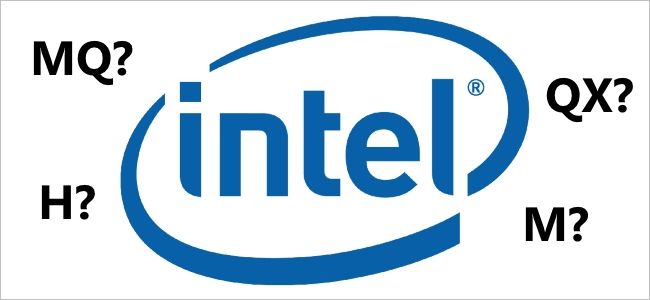The suffix lettering for Intel processors can seem like some kind of secret code at times, but what do they actually mean or stand for? Today's SuperUser Q&A post helps clear things up for a confused reader.
Today’s Question & Answer session comes to us courtesy of SuperUser—a subdivision of Stack Exchange, a community-driven grouping of Q&A web sites.
The Question
SuperUser reader Ehsan Sajjad wants to know what the meanings of Intel Processor suffixes are:
I just bought a Core i7, 2nd generation machine which shows information for the processor in BIOS as:
- Intel Core i7-2620M CPU @ 2.70Ghz
I have seen i7, 3rd and 4th generation processors listed in Google search results, but I do not understand what the suffix (M) means. I have also seen other processors with suffixes like MQ and QX.
Can somebody please explain what these suffixes actually mean?
What are the meanings of Intel Processor suffixes?
The Answer
SuperUser contributor DavidPostill has the answer for us:
What Do the Suffixes Mean?
- C - Desktop processor based on the LGA 1150 package with high performance graphics
- H - High performance graphics
- K - Unlocked
- M - Mobile
- Q - Quad-core
- R - Desktop processor based on BGA1364 (mobile) package with high performance graphics
- S - Performance-optimized lifestyle
- T - Power-optimized lifestyle
- U - Ultra-low power
- X - Extreme edition
- Y - Extremely low power
Which Has the Best Performance?
See: The Performance Benchmark Library [Intel]
This library is a tool that can help you find performance benchmarks for Intel products. Select at least one of the filter options and click Get Results to find the benchmark you are looking for.
Which Has the Best Power Consumption?
The detailed specifications for each processor can be found at: View Processor Specifications and Compare Processors [Intel - ARK]
About Intel Processor Numbers
Source: Intel Processor Numbers: Laptops, Desktops, and Mobile Devices [Intel]
The processor number is one of several factors, along with processor brand, specific system configurations, and system-level benchmarks to be considered when choosing the right processor for your computing needs.
A higher number within a processor class or family generally indicates more features, but it may be more of one and less of another. Once you decide on a specific processor brand and type, compare processor numbers to verify the processor includes the features you are looking for.
See the source link above for all the letter and product line suffixes.
Have something to add to the explanation? Sound off in the comments. Want to read more answers from other tech-savvy Stack Exchange users? Check out the full discussion thread here.

